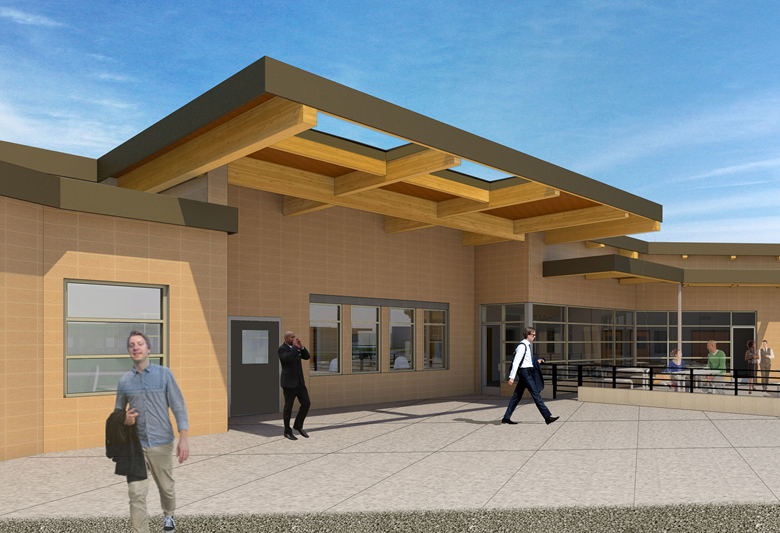
A rendering of Monterey County’s juvenile hall, which is now scheduled to be finished in 2021, at a cost of $61.3 million. Photo courtesy of the DLR group.
With the pandemic pounding government coffers and growing national protests over policing in communities of color, the Monterey County Board of Supervisors announced Tuesday that it will reduce the size of its soon-to-be constructed juvenile hall.
The county’s already much-delayed construction project will now be significantly scaled back, a reduction in bed space from 120 beds to 80, saving the county nearly $7 million in construction costs.
The new juvenile hall is now expected to cost $61.3 million, with the county expected to provide $27.8 million of that total. The construction was originally expected to be completed in 2018 at a cost of $58.7 million, but the project has been pushed back several times as a result of problems with the bidding process, the building’s foundation, issues with soil and many changes to the original design. The project is now expected to be completed in July 2021.
Built to replace the county’s aging Wellington M. Smith Jr. Juvenile Hall, the new facility has been in the works for nearly a decade, after Monterey County received $35 million from the state.
The funds were made possible by a 2007 shift from state- to county-level supervision of juvenile offenders, accompanied by $300 million in funding that was distributed among 22 counties. Most of that money has gone to construct new detention facilities, but they have often sat empty. Over the past 15 years, the number of youth held in detention across the state has plunged dramatically, along with youth crime. The state’s juvenile detention facilities are now operating at just one-third of capacity, according to the San Francisco-based Center on Juvenile and Criminal Justice.
It’s the same story in Monterey County. In June 2015, there were 53 youth held before sentencing in the juvenile hall on an average day, with 40 more at the Monterey County Youth Center, where the county locks up youth who have been sentenced by a delinquency court judge. But today, there are 23 youth detained at the youth center and a similar number in juvenile hall, according to Monterey County Chief Probation Officer Todd Keating.
The county’s dropping numbers, in addition to cost savings, helped persuade Supervisor Jane Parker.
“Where we’ve ended up is not necessarily such a bad place,” Parker said at the Wednesday meeting.
Advocates with the Motivating Individual Leadership for Public Advancement (MILPA) Collective—a Salinas community-based organization that works with formerly incarcerated young people — have been protesting the county’s massive investment since 2013. The group’s members had earlier success as well, pushing the county to reduce the juvenile hall footprint from 150 beds to 120.
Now, the advocates are pushing the county to do more to meet the needs of young people who come in contact with the justice system, buoyed by cries across the country for a dramatic scaling back of law enforcement.
At its meeting on Tuesday, the Board of Supervisors approved a resolution that calls for “systemic changes that address the decades of institutional racism and inequality across our nation that adversely impact communities of color.”
Cesar Lara, policy director of the MILPA Collective, said serious reflection over George Floyd – whose death at the hands of a Minneapolis police officer has inspired protests around the world – should lead the county to shift money away from law enforcement. As it prepares its budget later this month, Lara said Monterey County should consolidate the dwindling numbers of youth in lockups and close the youth center when the new juvenile hall opens, saving the county nearly $10 million.
“That’s the only way we’re going to change the same cycle we’ve seen for years: one generation following the last generation into a cycle of incarceration,” Lara said.
For Maria Gonzalez, a University of Southern California student and Salinas native who spoke at the meeting while wearing a black face mask, the way to address the “root causes of crime” is by investing in after-school programs for youth, more mental health services and housing – instead of incarceration.
“Your community is asking you to think about the huge positive impact that the reallocation of those funds would have on the community as a whole,” Gonzalez said Wednesday, encouraging county supervisors to act.
Jeremy Loudenback is a senior editor for The Imprint and can be reached at [email protected].





